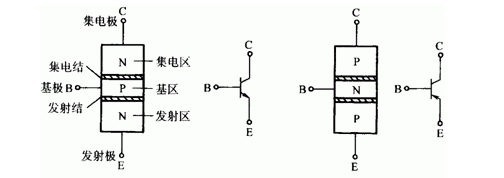This article introduces the structure and classification of transistors. Transistors are composed of two PN structures, which are divided into NPN type and PNP type. According to the different materials used, transistors are divided into NPN type germanium tubes and NPN type silicon tubes, and PNP type germanium tubes. tube and PNP type silicon tube, and introduces the internal structure characteristics of the transistor.
Transistor structure and classification Internal structure characteristics of transistor
The transistor is composed of two PN structures, which are divided into three layers. According to the order of P-type and N-type arrangement, it can be divided into NPN type and PNP type. The structure diagram and circuit symbol are shown in the figure below.
According to the different materials used, transistors can be divided into NPN germanium tubes and NPN silicon tubes, PNP germanium tubes and PNP silicon tubes.

As can be seen from the above figure, both types of transistors are divided into base area, emitter area, and collector area, and the electrodes drawn out are called base (B), emitter (E), and collector (C).
The junction between the base region and the emitter region is called the emitter junction; the junction between the base region and the collector region is called the collector junction. The difference between NPN type and PNP type symbols is that the direction of the arrow of the emitter is different.
The internal structure characteristics of the transistor: the emission region has the highest impurity concentration, that is, the multi-substance concentration is the highest, and the volume is relatively large; the base region is very thin and the impurity concentration is extremely low; the collector region has the largest volume, and the impurity concentration is lower than that of the emission region. This is the internal condition for the transistor to have a current amplification effect.

